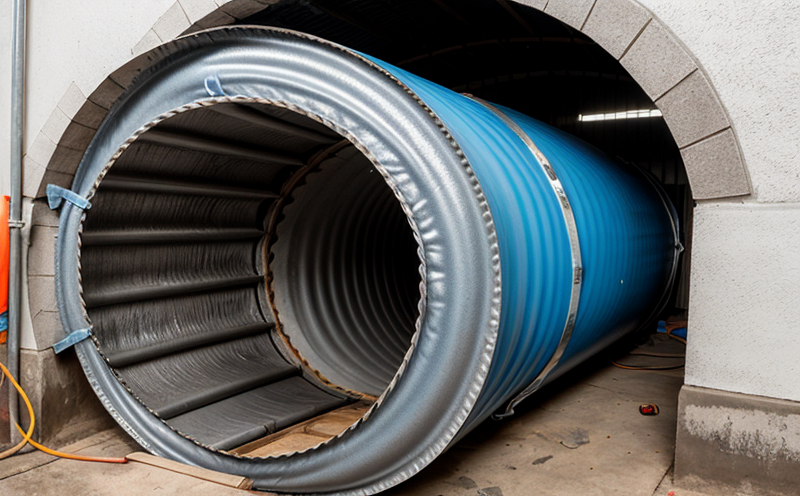Duct penetration sealing inspection
The duct penetration sealing inspection is a critical component of fire safety and protection systems. This procedure ensures that all penetrations through building walls, floors, or ceilings are properly sealed to prevent the spread of smoke, heat, and fire. Proper sealing minimizes the risk of fire containment failure, which could lead to catastrophic consequences in case of an emergency.
Building codes such as NFPA 211, ANSI/AIHA Z530.1, and EN 14896 mandate that duct penetrations are inspected regularly to ensure they do not compromise the integrity of the building's fire protection systems. This inspection involves a detailed assessment of all joints, gaps, and holes where ductwork enters or exits structural elements.
The process typically begins with an initial visual inspection, followed by more rigorous testing methods such as pressurized smoke flow tests using calibrated equipment like a pressure differential meter. The goal is to identify any areas that may allow uncontrolled smoke movement during a fire scenario.
Once identified, these deficiencies can be addressed through various sealing materials and techniques designed specifically for this purpose. These include specialized putties, foams, or metal inserts depending on the size and location of the penetration. It is crucial to select appropriate materials that meet local building codes and standards such as ASTM D395.
The success of a duct penetration sealing inspection also depends heavily on proper documentation and reporting. Detailed records should be kept documenting all findings along with recommendations for corrective actions. This information becomes invaluable during follow-up inspections, ensuring consistent compliance over time.
Benefits
- Enhanced Fire Safety: Proper sealing reduces the risk of fire spread across different areas within a building.
- Improved Smoke Containment: By preventing smoke from spreading through ducts, lives are saved and property damage reduced.
- Compliance Assurance: Regular inspections ensure that buildings meet relevant fire safety regulations and codes.
- Economic Savings: Early detection of issues prevents costly renovations or replacements later down the line.
Why Choose This Test
Selecting a duct penetration sealing inspection service is essential for maintaining optimal fire protection within your facility. Our team uses advanced tools and techniques to conduct thorough assessments, providing accurate data that supports informed decision-making.
We employ highly trained professionals who adhere strictly to recognized standards such as NFPA 211 and ISO 9001:2015 for quality assurance. Their expertise ensures that every aspect of the inspection process is conducted efficiently and effectively, leading to reliable results.
Our commitment extends beyond just conducting inspections; we offer comprehensive support throughout the entire lifecycle of your fire protection systems. From initial planning stages through implementation and ongoing maintenance, our services ensure continuous compliance with all applicable regulations.
Moreover, choosing us guarantees access to state-of-the-art equipment tailored specifically for this type of inspection. This includes sophisticated measurement devices capable of detecting even minute gaps or discrepancies that might otherwise go unnoticed during routine checks.
International Acceptance and Recognition
The duct penetration sealing inspection is widely recognized internationally, particularly in jurisdictions where stringent fire safety measures are enforced. Countries like the United States (NFPA), Canada (CSA), Europe (EN standards), Australia (AS/NZS) all emphasize the importance of this procedure.
International organizations such as ISO and IEC provide guidelines that complement national regulations, ensuring consistency across borders. For instance, ISO 9001:2015 focuses on quality management systems which can be applied to any aspect of fire protection including duct sealing inspections.
Incorporating these internationally accepted practices into your facility's routine helps ensure seamless integration with global standards while maintaining local compliance requirements. This approach fosters a culture of continuous improvement and best practice implementation across various industries.





